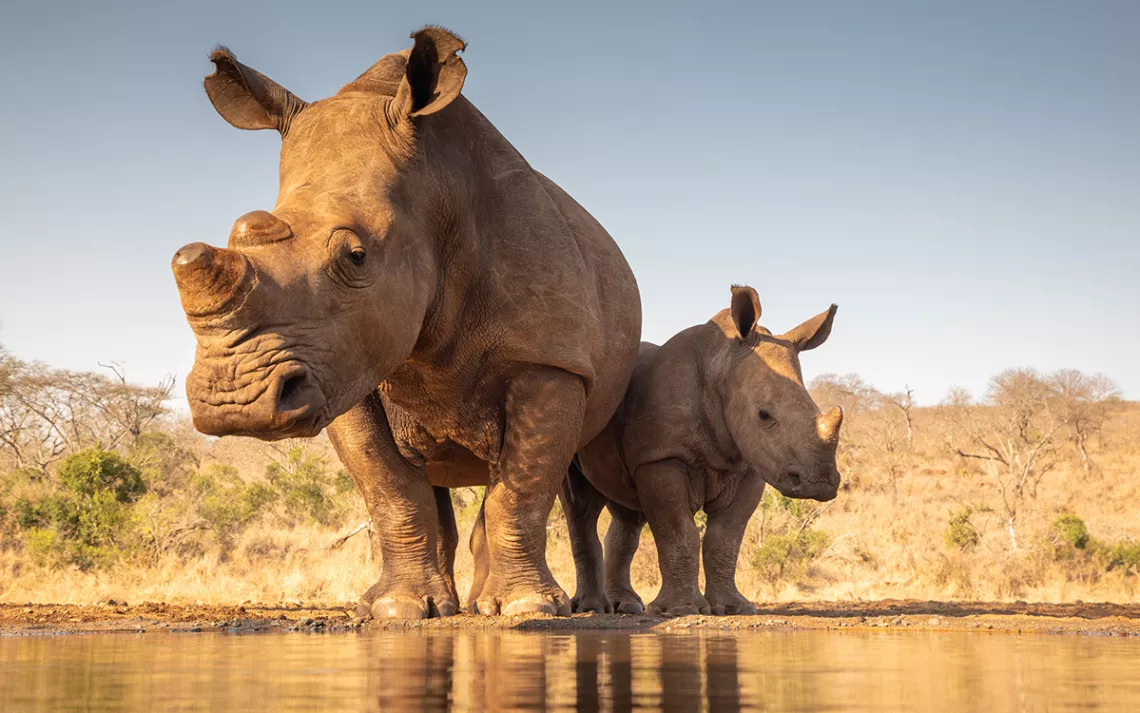How Biodiversity Can Prevent Pandemics
It's about which species, not how many

Photo by Peter VanDam | iStock
For years, some scientists have argued that despite its benefits, biodiversity poses a major risk to human health, because the sheer variety of species in biodiverse landscapes creates greater opportunities for new pathogens to develop. On the surface this has made sense—a study published in Nature in 2008 found that 72 percent of emerging infectious diseases between 1940 and 2004 originated with wildlife. But a survey of more recent research published recently in The Proceedings of the National Academy of Sciences (PNAS) reaches a very different conclusion: Biodiversity actually protects against the emergence of new infectious diseases by keeping the handful of species most likely to spread diseases in check.
“The mythology has been that nature is dangerous because biodiversity is filled with pathogens, viruses, and bacteria,” Dr. Felicia Keesing, lead author of the survey and an ecologist at Bard College, told Sierra. “We've been told a story that's wrong.”
In the wake of the COVID-19 pandemic, Keesing and her coauthor, Dr. Richard S. Ostfeld, a disease ecologist at the Cary Institute of Ecosystem Studies, began to synthesize more than 80 recent studies on the relationship between biodiversity and the emergence and transmission of zoonotic disease. Their conclusion: A lack of quality data collection has exaggerated the connection between wild landscapes and emerging pathogens. In fact, they conclude, protecting biodiversity is actually key to protecting humans from zoonotic pathogens like SARS and COVID-19.
Research that connects biodiversity with a risk of emerging pathogens often relies on something called the total host diversity model, which assumes that the more species there are in a given area, the greater the number of potential hosts for potential pathogens, which can then make the leap to humans. Under this model, all species have an equal chance of potentially making people sick.
Keesing and Ostfeld, however, argue that research should be based on something called the zoonotic host diversity and abundance model—a more nuanced approach that acknowledges that most pathogens that infect humans are carried by a handful of different species: rodents, bats, primates, cloven-hoofed mammals such as deer and sheep, and domesticated carnivores like cats and dogs. Under this model, species that reproduce quickly and have relatively short life spans pose the greatest risk for transmitting zoonotic pathogens since they exhibit a weaker immune response. These species tend to multiply in human-dominated places more than they do in biodiverse landscapes, increasing the risk of spillover.
A long-lived species, like a rhinoceros, is less likely to catch and transmit pathogens than, say, a rat. When we trash biodiverse habitats, said Keesing, the kinds of animals that carry zoonotic pathogens are the ones who prosper. “We are creating our own problem.”
Another problem with research into zoonotic outbreaks, says Keesing, is that scientists often excessively focus on one host, ignoring the fact that pathogens hop between different species with ease. Scientists traced the COVID-19 outbreak to bats, but for the most part neglected to study how those bats’ immune strategies, response to disturbance, and habitat preferences could provide insight into how the spread of future outbreaks could be predicted and prevented.
The survey does note that past studies have reported a slight correlation between biodiversity and zoonotic disease. But it points out that other factors show an even stronger connection—and are less written about. Density of human populations and anthropogenic impacts like climate change, deforestation, and conversion of wild areas to agricultural land exhibit a stronger correlation to disease outbreaks than the presence of a diversity of potential host species.
If scientists want to do more critical, robust research into wildlife and emerging pathogens, Keesing and Ostfeld conclude, they need to look at the problem in a different way. The question should not be “Which species possess the virus?” Keesing said, but “How do we reduce danger?” With these questions in mind, policy-makers and public health experts will be better able to prevent zoonotic outbreaks in the future.
“Nature is better at controlling those dangerous species than we are,” Keesing said. “The way we do that is by preserving, and in some cases, restoring biodiversity.”
 The Magazine of The Sierra Club
The Magazine of The Sierra Club



